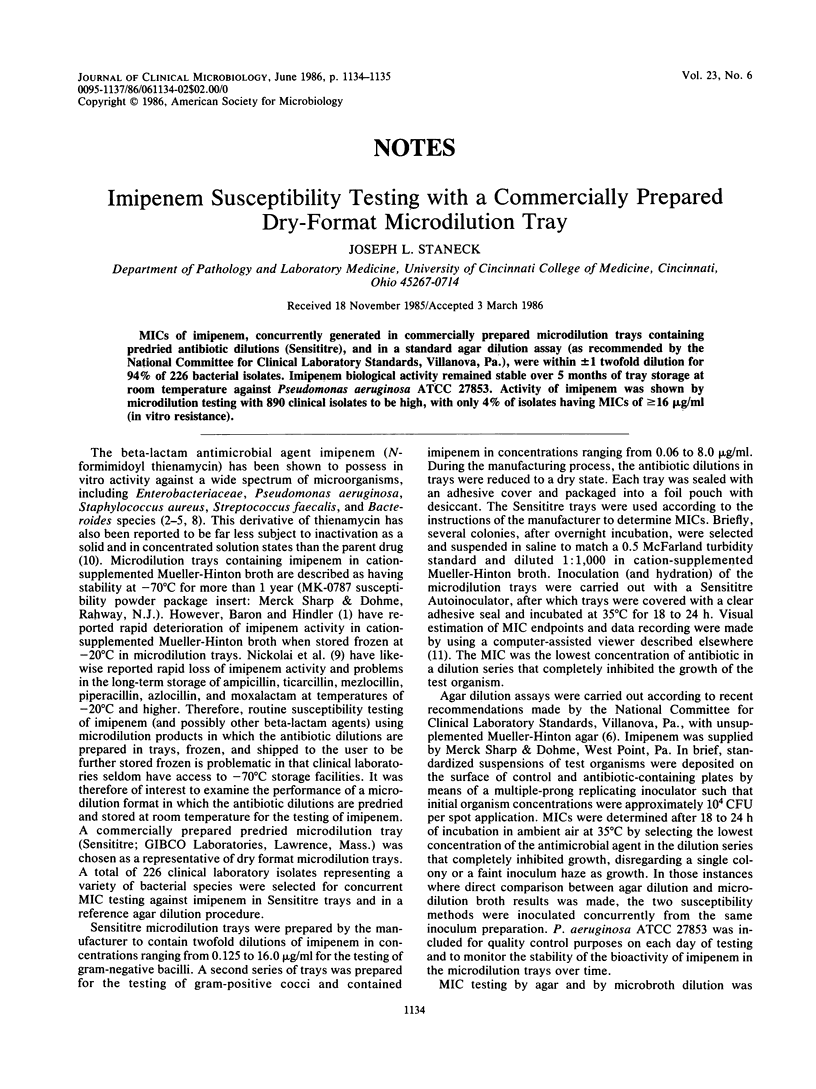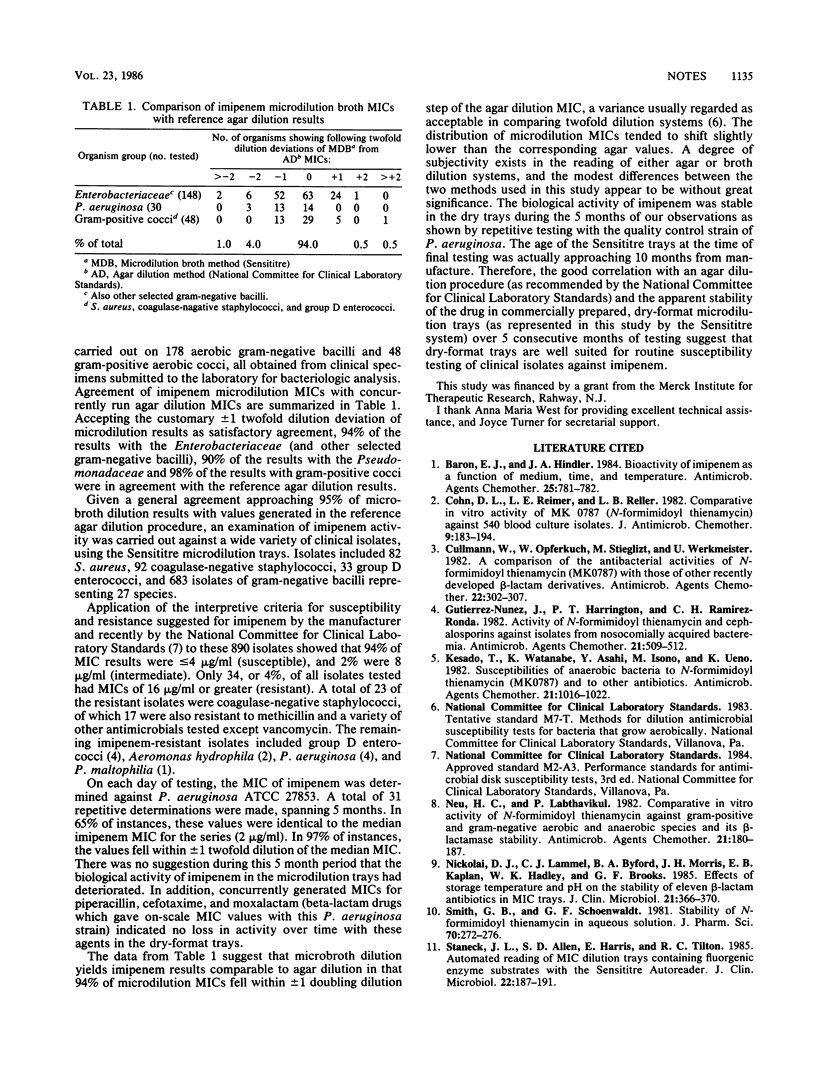Abstract
MICs of imipenem, concurrently generated in commercially prepared microdilution trays containing predried antibiotic dilutions (Sensititre), and in a standard agar dilution assay (as recommended by the National Committee for Clinical Laboratory Standards, Villanova, Pa.), were within +/- 1 twofold dilution for 94% of 226 bacterial isolates. Imipenem biological activity remained stable over 5 months of tray storage at room temperature against Pseudomonas aeruginosa ATCC 27853. Activity of imipenem was shown by microdilution testing with 890 clinical isolates to be high, with only 4% of isolates having MICs of greater than or equal to 16 micrograms/ml (in vitro resistance).
Full text
PDF

Selected References
These references are in PubMed. This may not be the complete list of references from this article.
- Baron E. J., Hindler J. A. Bioactivity of imipenem as a function of medium, time, and temperature. Antimicrob Agents Chemother. 1984 Jun;25(6):781–782. doi: 10.1128/aac.25.6.781. [DOI] [PMC free article] [PubMed] [Google Scholar]
- Cohn D. L., Reimer L. G., Reller L. B. Comparative in-vitro activity of MK0787 (N-formimidoyl thienamycin) against 540 blood culture isolates. J Antimicrob Chemother. 1982 Mar;9(3):183–194. doi: 10.1093/jac/9.3.183. [DOI] [PubMed] [Google Scholar]
- Cullmann W., Opferkuch W., Stieglitz M., Werkmeister U. A comparison of the antibacterial activities of N-formimidoyl thienamycin (MK0787) with those of other recently developed beta-lactam derivatives. Antimicrob Agents Chemother. 1982 Aug;22(2):302–307. doi: 10.1128/aac.22.2.302. [DOI] [PMC free article] [PubMed] [Google Scholar]
- Gutiérrez-Núez J., Harrington P. T., Ramirez-Ronda C. H. Activity of N-formimidoyl thienamycin and cephalosporins against isolates from nosocomially acquired bacteremia. Antimicrob Agents Chemother. 1982 Mar;21(3):509–512. doi: 10.1128/aac.21.3.509. [DOI] [PMC free article] [PubMed] [Google Scholar]
- Kesado T., Watanabe K., Asahi Y., Isono M., Ueno K. Susceptibilities of anaerobic bacteria to N-formimidoyl thienamycin (MK0787) and to other antibiotics. Antimicrob Agents Chemother. 1982 Jun;21(6):1016–1022. doi: 10.1128/aac.21.6.1016. [DOI] [PMC free article] [PubMed] [Google Scholar]
- Neu H. C., Labthavikul P. Comparative in vitro activity of N-formimidoyl thienamycin against gram-positive and gram-negative aerobic and anaerobic species and its beta-lactamase stability. Antimicrob Agents Chemother. 1982 Jan;21(1):180–187. doi: 10.1128/aac.21.1.180. [DOI] [PMC free article] [PubMed] [Google Scholar]
- Nickolai D. J., Lammel C. J., Byford B. A., Morris J. H., Kaplan E. B., Hadley W. K., Brooks G. F. Effects of storage temperature and pH on the stability of eleven beta-lactam antibiotics in MIC trays. J Clin Microbiol. 1985 Mar;21(3):366–370. doi: 10.1128/jcm.21.3.366-370.1985. [DOI] [PMC free article] [PubMed] [Google Scholar]
- Smith G. B., Schoenewaldt E. F. Stability of N-formimidoylthienamycin in aqueous solution. J Pharm Sci. 1981 Mar;70(3):272–276. doi: 10.1002/jps.2600700312. [DOI] [PubMed] [Google Scholar]
- Staneck J. L., Allen S. D., Harris E. E., Tilton R. C. Automated reading of MIC microdilution trays containing fluorogenic enzyme substrates with the Sensititre Autoreader. J Clin Microbiol. 1985 Aug;22(2):187–191. doi: 10.1128/jcm.22.2.187-191.1985. [DOI] [PMC free article] [PubMed] [Google Scholar]


